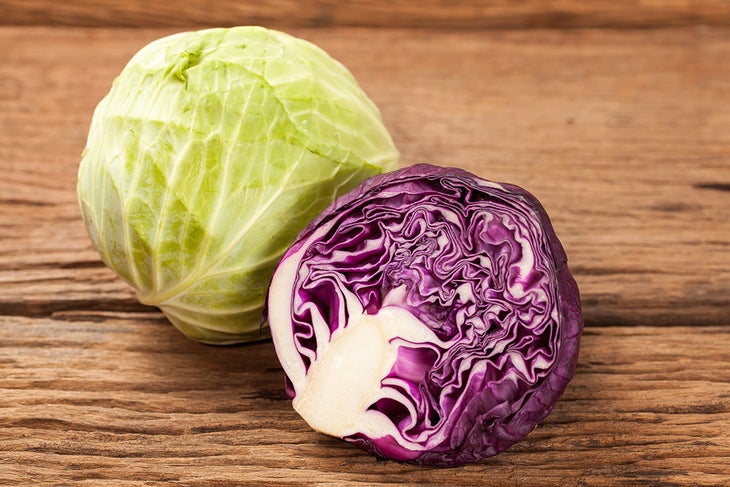Heading out the door? Read this article on the new Outside+ app available now on iOS devices for members! Download the app.

Coming in at fewer than 30 calories per cup, cabbagebe it green, red, or savoyis a reliable source of vitamins C and K. Several studies suggest that higher intakes of cruciferous vegetables, including cabbage, can safeguard against several forms of cancer, due in large part to an abundance of chemicals, such as glucosinolates, that help detoxify carcinogens. Among cabbage varieties, red has the highest antioxidant activity, mostly due to the wealth of anthocyanin compounds that provide the eye-catching hue.
Choose It & Use It At its best in the fall and winter months, cabbage comes in many forms, but the most common is head cabbage, a tight ball of waxy leaves. Choose those that feel heavy for their size, with crisp-looking, firmly packed leaves. Red cabbage tends to be a little sweeter than its green counterpart. Shred and enjoy it raw (think coleslaw), pickled, steamed, or sautéed.